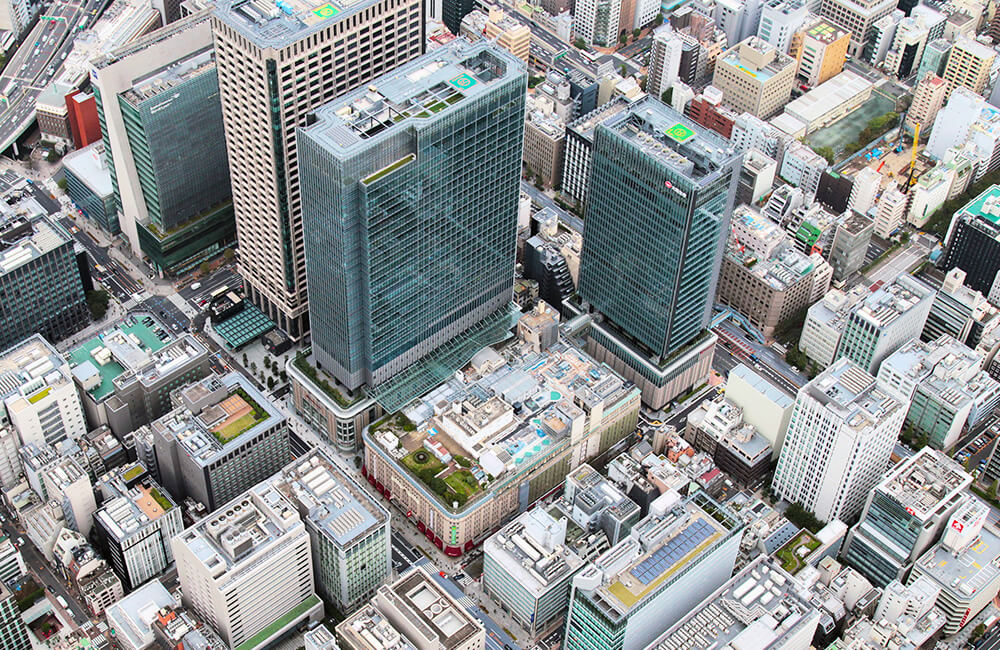Nihonbashi, a vibrant commercial district in central Tokyo, attracts visitors with its rich history and modern charm. This guide will take you on a journey through this dynamic area, exploring its iconic landmarks, shopping paradise, and cultural treasures.
Key Information
- Located in central Tokyo, near Tokyo Station
- Named after Nihonbashi Bridge, the starting point of Japan’s national road network
- A commercial district blending tradition and modernity
- Home to century-old shops and modern shopping complexes
- Features historic department stores and museums
Historical Background
Nihonbashi was originally a wooden bridge built in the early Edo period. It served not only as a crucial transportation route but also as the starting point of Japan’s national road network. During the Meiji period, the wooden bridge was reconstructed in stone. Over time, the Nihonbashi area developed into a thriving commercial center, with many century-old shops still operating today.
Main Attractions
Nihonbashi Bridge
Nihonbashi Bridge is the iconic structure that gives the entire area its name. Although the current bridge is a stone structure rebuilt during the Meiji period, its history dates back to the early Edo period. The bridge serves as both the starting point of Japan’s national road network and an excellent spot to view the surrounding architecture and canals.
Mitsukoshi Nihonbashi
Hours:
- Shops: 10:00 to 19:00
- Restaurants: 11:00 to 22:00
Mitsukoshi Nihonbashi is considered Japan’s first department store. This 7-story flagship store, completed in 1935, was designated as a historic structure in 1999. The store houses numerous high-end brands, allowing visitors to spend an entire day shopping.
Coredo Muromachi
Hours:
- Shops: typically 10:00 to 20:00
- Restaurants: typically 11:00 to 23:00
Coredo Muromachi is a newly developed shopping and dining complex comprising multiple elegant skyscrapers. Its design is inspired by the district’s Edo period heritage, blending modern and traditional aesthetics. Many shops specialize in traditional crafts and local foods from across Japan.
Takashimaya Nihonbashi
Hours:
- Shops: 10:30 to 19:30
- Restaurants: 11:00 to 21:30
Takashimaya Nihonbashi is housed in a nostalgia-evoking Western-style building from 1933 and is the first department store designated as an important cultural property. In 2018, two new adjacent buildings were added, increasing the store’s floor space by 50% and creating a striking contrast between old and new.
Mitsui Memorial Museum
Hours: 10:00 to 17:00 (entry until 16:30)
Admission: 1000 yen (or 1500 yen for special exhibitions)
Closed: Mondays and select irregular closures
The Mitsui Memorial Museum displays art collections from the Mitsui family. Opened in 2005, it features regularly changing themed exhibitions and a reconstructed teahouse.
Currency Museum
Hours: 9:30 to 16:30 (entry until 16:00)
Admission: Free
Closed: Mondays (except national holidays), December 29 to January 4
Located in an annex building across from the Bank of Japan, the Currency Museum opened in 1982 to commemorate the bank’s centenary. It offers a detailed history of Japanese currency and displays numerous historical coins and bills.
Tokyo Stock Exchange
Hours: 9:00 to 16:30 (entry until 16:00)
Admission: Free
Closed: Weekends, national holidays, December 31 to January 3
The Tokyo Stock Exchange, located near Nihonbashi Bridge, is open to the public on trading days. Visitors can view the trading center from the visitors’ gallery, participate in a simulated stock trading game, and learn about the history of the Japanese securities market.
Best Time to Visit
Spring (March-May) and autumn (September-November) are the best seasons to visit Nihonbashi. The weather is pleasant during these times, and visitors can enjoy cherry blossoms or autumn foliage. Avoid Japan’s Golden Week (late April to early May) and New Year holidays (late December to early January) to miss the crowds.
Getting There
- Subway: Take the Ginza, Tozai, or Asakusa line to Nihonbashi Station
- Subway: Take the Hanzomon or Ginza line to Mitsukoshimae Station
- On foot: 5-10 minute walk from the Nihonbashi Exit of Tokyo Station
Visitor Tips
- Wear comfortable shoes as there will be a lot of walking
- Check the closing days of attractions in advance to avoid disappointment
- Try local specialties at Coredo Muromachi
- Observe photography rules when visiting the Mitsui Memorial Museum
- Ask about tax-free shopping options
Official Websites
Conclusion
Nihonbashi is a captivating area that blends history and modernity, offering something for shoppers, food enthusiasts, and history buffs alike. From traditional department stores to modern shopping complexes, from historical museums to bustling streets, Nihonbashi offers a diverse range of experiences. Don’t miss the opportunity to explore this commercial and cultural center of Tokyo and experience the perfect fusion of tradition and innovation!
